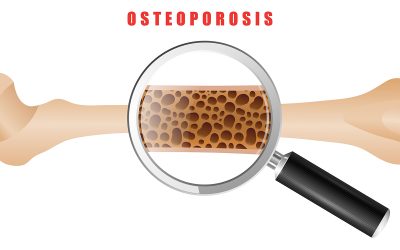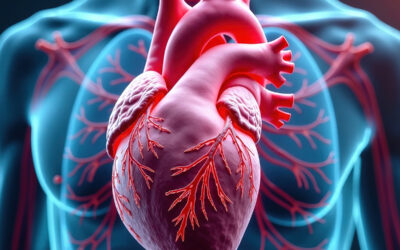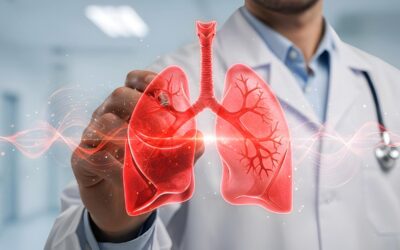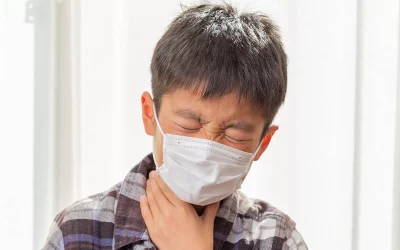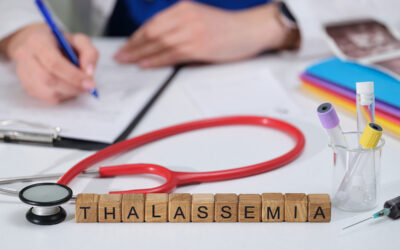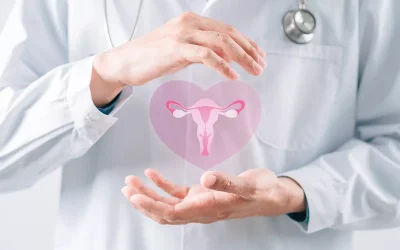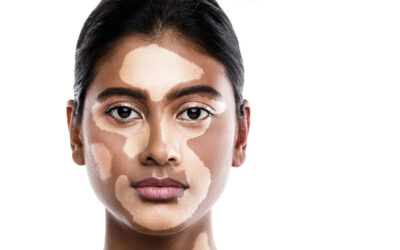Breast Lumps: When to Worry and When Not To
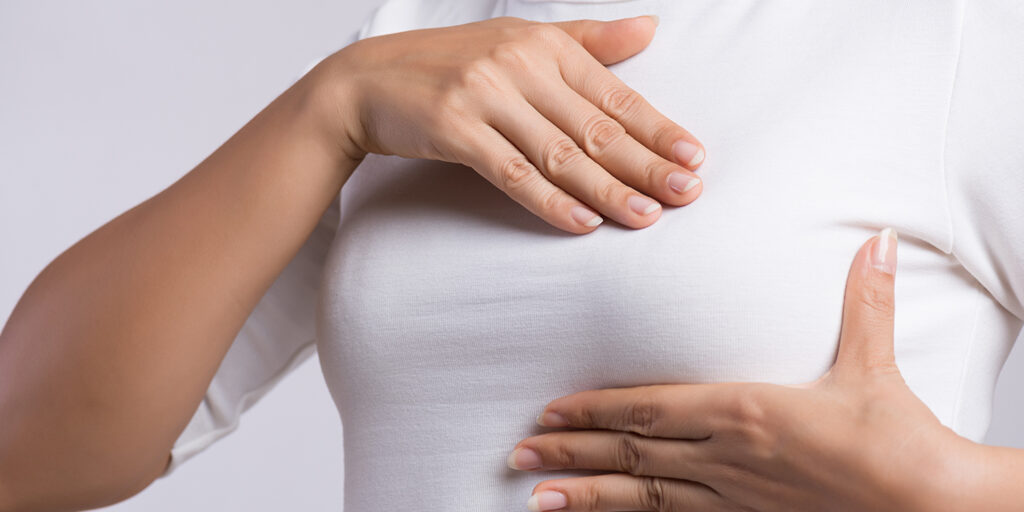
Breast lumps are one of the most common concerns that affect women across all age groups, and they can occur in men as well. In most cases, these lumps are harmless and may develop due to natural changes in breast tissue, hormonal shifts, or benign growths. However, some lumps may require closer medical attention to rule out more serious causes. Understanding what a breast lump is, how it feels, and when to seek medical advice is essential for maintaining breast health and peace of mind. To help, in this article, we will discuss the common causes, symptoms, types of breast lumps, and when they could be a cause for concern. Let’s begin by understanding the basics.
Table of Contents
ToggleUnderstanding Breast Lumps: What They are and How They Feel
A breast lump refers to an area of thickened tissue or swelling that feels different from the surrounding breast tissue. These lumps can vary in size, shape, texture, and tenderness. Some feel soft and movable, while others may feel firm or fixed in place. Their appearance and sensation often depend on the underlying cause.
Many breast lumps are benign (non-cancerous) and arise due to natural body changes such as hormonal fluctuations, fluid-filled cysts, or fibrous growths known as fibroadenomas. Occasionally, lumps may also result from infections or injury to the breast. While most lumps are not linked to cancer, being aware of their nature and seeking timely evaluation helps ensure that any concerning change is detected early and managed effectively.
Read more- Breast Self-Examination Steps & Age-Wise Screening Guidelines Every Woman
Common Causes of Breast Lumps
Breast lumps can develop for several reasons, and most are not related to cancer. The following are some of the most common causes that help explain when a lump may need medical attention.
- Hormonal changes: Shifts during the menstrual cycle can cause temporary thickening or tenderness in breast tissue.
- Cysts: Fluid-filled sacs that feel smooth, round, and movable; common among women in their 30s and 40s.
- Fibroadenomas: Non-cancerous, solid lumps that are firm yet rubbery and often painless.
- Infections or abscesses: Painful lumps may develop when milk ducts become blocked or inflamed, especially during breastfeeding.
- Fat necrosis: Firm nodules may appear after an injury or surgery as damaged fat tissue heals.
- Cancerous tumours: Hard, irregular lumps that do not move easily and need immediate medical evaluation.
Symptoms and Warning Signs of a Breast Lump
Breast lumps can present in different ways, and being aware of the accompanying signs helps identify when a change may need medical attention. While many lumps are harmless, certain symptoms may indicate an underlying problem that requires evaluation by a specialist.
Common symptoms and warning signs include:
- Noticeable swelling or lump: A distinct area that feels different from surrounding breast tissue.
- Change in breast shape or size: One breast appearing larger, swollen, or visibly altered.
- Skin changes: Dimpling, puckering, redness, or thickening over the lump.
- Nipple changes: Inversion, retraction, or discharge (especially if blood-stained).
- Pain or tenderness: Discomfort that may increase before menstruation or persist beyond the cycle.
- Swelling in the armpit: Enlarged lymph nodes near the breast or underarm area.
When to Worry and When Not To
Not every breast lump signals a serious condition, but knowing the difference between those that require urgent attention and those that are likely benign is essential. Even so, every new or persistent lump should be checked by a doctor for clarity and reassurance.
When to Worry
- The lump feels hard, irregular, or fixed and does not move easily under the skin.
- The breast shows skin dimpling, redness, or an orange-peel texture.
- There is nipple inversion, discharge (especially bloody), or noticeable distortion in breast shape.
- Swelling or pain occurs in the armpit, possibly due to enlarged lymph nodes.
When It May Not Be Serious (But Still Needs a Check)
- The lump feels soft, smooth, and movable, often changing with the menstrual cycle.
- The area is tender or painful, especially before menstruation.
- The lump appears during breastfeeding or following minor trauma.
While most breast lumps are benign, a professional assessment remains the safest way to confirm their nature and ensure early intervention if required.
Are All Breast Lumps Cancerous?
Most breast lumps are non-cancerous (benign) and result from natural changes in the body. Conditions such as cysts, fibroadenomas, or mild infections account for the majority of breast lumps and can often be treated or monitored without major intervention.
Cancerous lumps, though less common, tend to have distinct features. They are usually hard, irregular in shape, and fixed to the surrounding tissue. These lumps may not cause pain in the early stages but can be accompanied by other warning signs such as skin changes, nipple discharge, or swelling near the armpit.
It is also important to note that men can develop breast lumps due to hormonal imbalance, infections, or in rare cases, cancer. Identifying whether a lump is benign or malignant requires imaging and, if needed, a biopsy – steps that help ensure timely and accurate diagnosis.
Risk Factors for Developing Breast Lumps and Breast Cancer
Certain factors can increase the likelihood of developing breast lumps, some of which may carry a higher risk of becoming cancerous. Recognising these factors allows individuals to stay proactive about screening and lifestyle choices.
- Age: The risk of both benign and cancerous lumps increases with age, especially after 40.
- Hormonal fluctuations: Long-term use of hormone replacement therapy or oral contraceptives may influence breast tissue changes.
- Family history: Having close relatives with breast or ovarian cancer raises the risk due to possible genetic links.
- Genetic mutations: BRCA1 and BRCA2 gene mutations significantly heighten the risk of developing breast cancer.
- Obesity: Excess body fat increases oestrogen levels, contributing to higher risk.
- Alcohol consumption: Regular intake of alcohol can alter hormone balance and promote abnormal tissue growth.
- Previous radiation exposure: Past chest or upper-body radiation can increase susceptibility to breast abnormalities.
While some risks, such as genetics, cannot be controlled, adopting healthy habits and scheduling regular screenings can help detect changes early and reduce overall risk.
Diagnosis and Evaluation of Breast Lumps
Accurate diagnosis is essential to determine the cause of a breast lump and guide appropriate treatment. Doctors begin with a detailed medical history and a physical examination to assess the size, shape, and consistency of the lump. Depending on findings, further tests may be recommended for clarity.
Common diagnostic methods include:
- Clinical Breast Examination (CBE): A doctor manually examines both breasts and underarms to identify any unusual thickening or masses.
- Mammography: A specialised X-ray that detects lumps or tissue changes, even those too small to feel.
- Breast Ultrasound: Helps differentiate between solid and fluid-filled lumps, often used for younger women with denser breast tissue.
- Magnetic Resonance Imaging (MRI): MRI provides detailed images when mammogram or ultrasound findings are inconclusive.
- Fine Needle Aspiration Cytology (FNAC) or Biopsy: A small tissue or fluid sample is collected for laboratory analysis to confirm whether a lump is benign or malignant.
At Graphic Era Hospital, Dehradun, specialists use advanced imaging systems and image-guided biopsy techniques to ensure accurate, timely, and comfortable diagnosis for every patient.
Regular self-care and lifestyle awareness play an important role in maintaining breast health and detecting changes early. Here are some simple preventive measures that can help lower the risk of breast related issues and support long-term well-being.
By combining awareness with healthy habits, individuals can take proactive steps towards protecting their breast health and identifying concerns at an early stage.
When to Consult a Doctor Immediately?
While many breast lumps are harmless, some changes require prompt medical attention to rule out serious conditions. Delaying evaluation can make treatment more complex, so it is always better to seek medical advice early.
Consult a doctor without delay if:
- A lump persists beyond one menstrual cycle or continues to grow.
- The breast shows skin dimpling, redness, or thickening.
- There is nipple inversion or discharge, especially if bloody or unusual in colour.
- You experience pain, swelling, or warmth that does not improve with home remedies.
- A new lump appears near the armpit or collarbone.
Early consultation allows for accurate diagnosis, reassurance, and timely management, which in turn helps prevent complications and promoting better outcomes.
Why Choose Graphic Era Hospital for Breast Lump Evaluation and Treatment?
At Graphic Era Hospital, Dehradun, our breast care specialists combine advanced technology with expert medical guidance to deliver precise and compassionate care. We prioritise timely diagnosis, effective treatment, and continuous emotional support to guide every patient through their recovery journey. We provide:
- Experienced Breast Specialists: A team of skilled surgeons, oncologists, and radiologists work together to evaluate, diagnose, and treat breast lumps using evidence-based protocols.
- Advanced Diagnostic Technology: The hospital is equipped with digital mammography, breast ultrasound, and image-guided biopsy systems that help detect even small or complex lumps accurately.
- Comprehensive and Personalised Care: Each treatment plan is tailored to the patient’s condition and comfort, supported by counselling, post-treatment follow-ups, and continuous care for long-term recovery.
With expertise, empathy, and state-of-the-art facilities, Graphic Era Hospital is committed to safeguarding women’s health through early detection and comprehensive breast care.
What to Do after Discovering a Breast Lump?
Finding a lump in the breast can be worrying, but staying calm and acting promptly can make a significant difference. The first step is to avoid panic and remember that most breast lumps are not cancerous. Observe the lump for changes, note any associated symptoms, and schedule a medical consultation without delay.
Avoid self-diagnosis or home remedies, as only a professional evaluation can confirm whether a lump is benign or requires treatment. Early medical attention ensures the best possible outcome and provides peace of mind.
To book a breast examination or consultation with a specialist at Graphic Era Hospital, Dehradun, call 1800-889-7351 today.
Frequently Asked Questions (FAQs)
What kind of breast lumps are normal?
Normal breast lumps often result from hormonal changes, especially before menstruation. They usually feel soft, smooth, and movable. These lumps often disappear on their own but should still be examined by a doctor for reassurance.
When should I worry about a lump in my breast?
A lump that feels hard, irregular, or fixed, or is accompanied by nipple discharge or skin dimpling, requires immediate medical evaluation to rule out breast cancer.
Can men develop breast lumps?
Yes. Though rare, men can develop breast lumps due to hormonal imbalance, infections, or in some cases, breast cancer. Any persistent lump in men should be checked by a doctor.
Can breastfeeding cause lumps in the breast?
Yes. Breastfeeding women may develop lumps caused by blocked milk ducts or infections (mastitis). These lumps often improve with treatment and regular feeding or pumping.
Do hormonal changes or pregnancy cause breast lumps?
Yes. Hormonal changes during pregnancy, menstruation, or menopause can cause temporary lumps or tenderness due to changes in breast tissue.
How are breast lumps treated at hospitals in Dehradun?
Treatment depends on the cause. Doctors may recommend observation, drainage, medication, or surgical removal. At Graphic Era Hospital, Dehradun, breast care specialists use advanced technology and personalised treatment plans to ensure safe and effective management.
Where can I find breast lump specialists near me in Dehradun?
You can consult experienced breast pain specialists at Graphic Era Hospital, Dehradun, who offer advanced diagnostic imaging, guided biopsies, and personalised treatment for all types of breast lumps.
Is there a hospital near me in Dehradun for breast lump evaluation and treatment?
Yes. Graphic Era Hospital, Dehradun, provides comprehensive breast care, from early detection and accurate diagnosis to surgical and non-surgical treatments, all under one roof.
Can benign breast lumps come back after removal?
Yes. Some benign lumps, such as fibroadenomas, can recur even after removal. Regular follow-ups help monitor for new growths.
What should I do if I feel a lump near my armpit?
A lump near the armpit may indicate swollen lymph nodes or an extension of breast tissue. It is important to get it examined by a specialist to determine the cause and start appropriate treatment if needed.
By Specialities
- Bariatric Surgery
- Cancer Care
- Cardiology
- Dental
- Dermatology
- Diabetes & Endocrinology
- Endocrinology and Diabetes
- ENT (Ear Nose Throat)
- Eye Care
- Gastroenterology
- Haematology
- Health Care
- Health Tips
- Hematology
- Hepatology
- Internal Medicine
- Mental Health and Behavioural Sciences
- Metabolic
- Neonatology
- Nephrology
- Neurology
- Nutrition & Dietetics
- Obstetrics & Gynaecology
- Oncology
- Ophthalmology
- Orthopaedics
- Paediatric
- Physiotherapy & Rehabilitation
- Plastic and Reconstructive Surgery
- Psychology
- Pulmonology
- Rheumatology
- Spine
- Urology
Recent Posts
- Most Common Lifestyle Diseases in India and How to Prevent Them
- Does Pain in the Lower Back Always Mean a Kidney Problem?
- Osteoporosis: Early Warning Signs, Causes, and Treatment
- Understanding TAVI/TAVR: A Minimally Invasive Aortic Valve Replacement Procedure
- Acute and Chronic Bronchitis: Know the Difference and When to Seek Help
Need expert medical advice?
Share your details and our healthcare specialists will reach out to assist you.
By proceeding, you acknowledge and agree to our Privacy Policy, Terms of Use, and Disclaimer.


